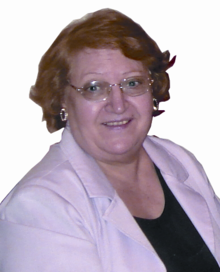Career
She is co-founder and member of the Society of Writers of Paraguay. She also had involvement in the founding of the group of Paraguayan Associated Writers and the Pen Club of Paraguay.
She is part of a generation of Paraguayan women who, early in the decade of the 1960s, made their literary production, occupying a very important area in the Paraguayan literature.
Her first steps in producing poetry, were directed towards children. Her first book of poems for children was called "Ojitos negros", published in April 1965.
In addition to her many books published, several of her poems have been included in anthologies and literary publications, both in her country and other foreign nations.
Carmagnola is a writer from the group of contemporary writers that marked a new trend in the literature of Paraguay. Among them are: Eloy Fariña Núñez, Hérib Campos Cervera, Josefina Plá, Óscar Ferreiro, Elvio Romero, José Luis Appleyard, Ramiro Domínguez, José María Gómez Sanjurjo, Rubén Bareiro Saguier, Carlos Villagra Marsal, Jacobo Rauskin, Miguel Ángel Fernandez, Roque Vallejos, Emilio Pérez Chaves, Susy Delgado, and Mario Casartelli.
Poetic style
About her predilection for poetry for children, this author has pointed out: "… writing for children is my great commitment and my singular pride, as well."
In 1979, Mrs. Josefina Plá responded Carmagnola children's works: "There is tenderness in the book, a lot of tenderness, too if you do not know Gladys and do not know that she is pure tenderness; that sweetness is her accent and her images of saccharin is not true but honey cookbook interlinings heart. "
Her poems for children have a sweet and inviting style, and allow readers to access their inner child. They produce a sense of delight and can transport readers back to the times of ice cream, daytime naps, and tireless games with friends.
It has also been echoed her work "Piolin", the Argentine author Maria Elena Walsh, who defined it as "transparent Piolin", for its literary beauty and clarity.
Since 1980, emerges a stage of maturity as a writer, moving their production toward a modern style. They emerge at this stage, poems that reflect an era intimately reflective of the poet and several poems of nature amatory.
Her work for adults rose in a language that is clear and transparent that feels like a breath of fresh air for readers.

William Carlos Williams was an American poet and physician of Latin American descent closely associated with modernism and imagism. His Spring and All (1923) was written in the wake of T. S. Eliot's The Waste Land (1922). In his five-volume poem Paterson (1946-1958), he took Paterson, New Jersey as "my 'case' to work up. It called for a poetry such as I did not know, it was my duty to discover or make such a context on the 'thought.'" Some of his best known poems, "This Is Just To Say" and "The Red Wheelbarrow", are reflections on the everyday. Other poems reflect the influence of the visual arts. He, in turn, influenced the visual arts; his poem "The Great Figure" inspired the painting I Saw the Figure 5 in Gold by Charles Demuth. Williams won a posthumous Pulitzer Prize for Poetry for Pictures from Brueghel and Other Poems (1962).
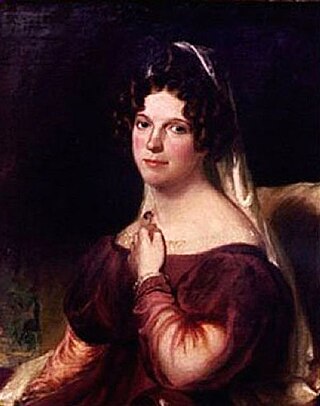
Felicia Dorothea Hemans was an English poet. Two of her opening lines, "The boy stood on the burning deck" and "The stately homes of England", have acquired classic status.

Modernist poetry in English started in the early years of the 20th century with the appearance of the Imagists. Like other modernists, Imagist poets wrote in reaction to the perceived excesses of Victorian poetry, and its emphasis on traditional formalism and ornate diction.

Anne Waldman is an American poet. Since the 1960s, Waldman has been an active member of the Outriders Poetry Project experimental poetry community as a writer, performer, collaborator, professor, editor, scholar, and cultural/political activist. She has also been connected to the Beat Generation poets.
The poetry of South Africa covers a broad range of themes, forms and styles. This article discusses the context that contemporary poets have come from and identifies the major poets of South Africa, their works and influence.

Alfonsina Storni was a Swiss-Argentine poet and playwright of the modernist period.
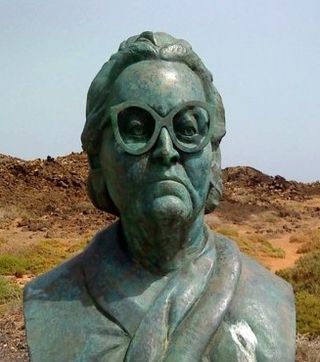
María Josefina Teodora Plá Guerra Galvany was a Spanish-born poet, playwright, journalist, art critic, sculptor, ceramicist, and historian. She has been described as "the most influential woman in Paraguayan cultural matters in the twentieth century."
Cuban literature is the literature written in Cuba or outside the island by Cubans in Spanish language. It began to find its voice in the early 19th century. The major works published in Cuba during that time were of an abolitionist character. Notable writers of this genre include Gertrudis Gómez de Avellaneda and Cirilo Villaverde. Following the abolition of slavery in 1886, the focus of Cuban literature shifted. Dominant themes of independence and freedom were exemplified by José Martí, who led the modernista movement in Latin American literature. Writers such as the poet Nicolás Guillén focused on literature as social protest. Others, including Dulce María Loynaz, José Lezama Lima and Alejo Carpentier, dealt with more personal or universal issues. And a few more, such as Reinaldo Arenas and Guillermo Cabrera Infante, earned international recognition in the postrevolutionary era.

Joy Harjo is an American poet, musician, playwright, and author. She served as the 23rd United States Poet Laureate, the first Native American to hold that honor. She was also only the second Poet Laureate Consultant in Poetry to have served three terms. Harjo is a citizen of the Muscogee Nation and belongs to Oce Vpofv. She is an important figure in the second wave of the literary Native American Renaissance of the late 20th century. She studied at the Institute of American Indian Arts, completed her undergraduate degree at University of New Mexico in 1976, and earned an MFA degree at the University of Iowa in its creative writing program.

Ophelia Alcantara Dimalanta was a Filipino poet, editor, author, and academician. One of the country's most respected writers, Dimalanta published several books of poetry, criticism, drama, and prose and edited various literary anthologies. In 1999, she received Southeast Asia's highest literary honor, the S.E.A. Write Award.

Annie Finch is an American poet, critic, editor, translator, playwright, and performer and the editor of the first major anthology of literature about abortion. Her poetry is known for its often incantatory use of rhythm, meter, and poetic form and for its themes of feminism, witchcraft, goddesses, and earth-based spirituality. Her books include The Poetry Witch Little Book of Spells, Spells: New and Selected Poems, The Body of Poetry: Essays on Women, Form, and the Poetic Self, A Poet's Craft, Calendars, and Among the Goddesses.
Hérib Campos Cervera (1905-1953) was a Paraguayan poet and writer.

Lorna Dee Cervantes is an American poet and activist, who is considered one of the greatest figures in Chicano poetry. She has been described by Alurista as "probably the best Chicana poet active today."
Alejandro Guanes was born in Asunción, Paraguay, November 28, 1872. He was son of Francisco Guanes and Matilde Recalde.
Panamanian literature comprises the whole of literary works written in Panama. The first literature relating to Panama can be dated to 1535, with a modern literary movement appearing from the mid-19th century onwards

Occasional poetry is poetry composed for a particular occasion. In the history of literature, it is often studied in connection with orality, performance, and patronage.
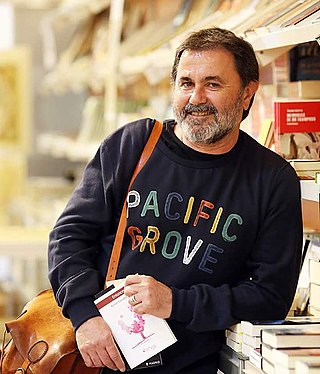
Aurelio González Ovies is a Spanish writer and poet from Asturias. He has a Ph.D in Classical Philology and he is a Professor of Latin Philology at the University of Oviedo. In words of the writer Victor Alperi:
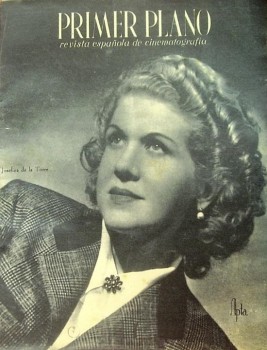
Josefina de la Torre Millares was a Spanish poet, novelist, and opera singer, as well as a stage, film, radio, and television actress. She was closely associated with the Generation of '27, an influential group of poets including Ernestina de Champourcín, Juan José Domenchina, Concha Méndez and Carmen Conde, that arose in Spanish literary circles between 1923 and 1927, essentially out of a shared desire to experience and work with avant-garde forms of art and poetry.

Ella Dietz was an American actress and author. Professionally known by her maiden name, Ella Dietz, she was a writer of poems and songs, an instructor in elocution and dramatic art, a reader, and a reciter for charitable events. In the United States, she served as the fifth president of Sorosis, vice-president of the National Council of Women, and was a leading member of the Advisory Board of The Federation of Clubs. To the British public, she was well-known for her histrionic abilities, having acted leading roles in over thirty plays in London during the period of 1874 to 1881. She was also skilled as an artist with pencil and brush.
